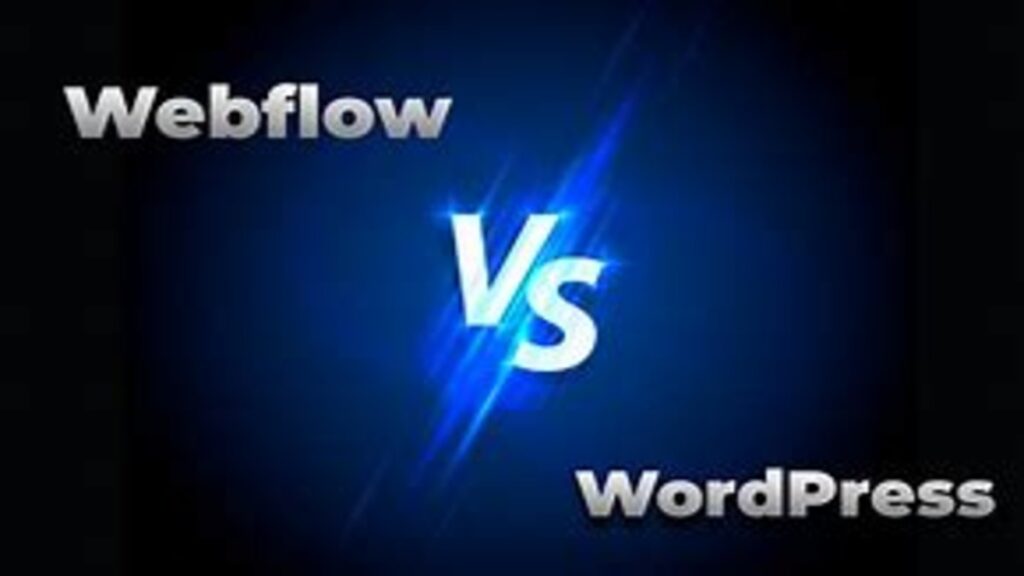Webflow vs WordPress. If you’re planning to build a website, you’ve probably heard of Webflow and WordPress. These two platforms are giants in the world of website creation, each offering unique features tailored to different user needs. But how do you choose between them?
In this article, we’ll break down everything you need to know features, ease of use, pricing, customization, SEO, and more to help you decide which platform is the best fit for your project or business.
What Is Webflow?
Webflow is a visual, no-code website builder that combines design, animation, and CMS (content management system) capabilities. It’s ideal for designers, developers, and businesses that want complete creative control without needing to write code.
What Is WordPress?
WordPress.org is an open-source CMS that powers over 40% of all websites online. It’s known for its flexibility, massive plugin ecosystem, and scalability. WordPress is self-hosted, meaning you need your own hosting and domain, but it gives you ultimate control.
1. Ease of Use
Webflow:
- Visual drag-and-drop builder
- Real-time preview of changes
- More technical than traditional site builders
- Learning curve for beginners
WordPress:
- Friendly for beginners with themes and plugins
- Gutenberg block editor makes editing content easier
- Advanced customization requires some coding or plugins
Winner: WordPress for beginners, Webflow for designers
2. Design Flexibility
Webflow:
- Pixel-perfect design capabilities
- CSS, HTML, and JavaScript level control (without coding)
- Responsive design built-in
- Custom animations and interactions
WordPress:
- Depends on the theme you use
- Advanced design possible with page builders like Elementor or Divi
- More rigid without additional tools
Winner: Webflow for creative professionals who want design freedom
3. Content Management
Webflow:
- Built-in CMS suitable for blogs, portfolios, and collections
- Structured content fields
- Limited blogging features compared to WordPress
WordPress:
- Robust CMS with custom post types and taxonomies
- Excellent blogging and editorial workflows
- Superior content organization
Winner: WordPress, especially for blogs and content-heavy sites
4. Plugins & Integrations
Webflow:
- Fewer native integrations
- Third-party tools needed for advanced features
- No plugin marketplace
WordPress:
- 59,000+ plugins available
- Seamless integrations with payment gateways, email tools, and marketing platforms
- More mature ecosystem
Winner: WordPress
5. SEO Capabilities
Webflow:
- Clean, semantic code
- Built-in SEO tools (meta tags, alt text, canonical URLs)
- Fast loading with optimized hosting
WordPress:
- Great SEO with plugins like Yoast and Rank Math
- Control over URLs, tags, sitemaps, and more
- Needs optimization for speed and performance
Winner: Tie—Webflow is fast and clean out of the box, while WordPress wins with flexibility through plugins
6. E-Commerce Functionality
Webflow:
- Built-in e-commerce platform
- Good for simple stores
- Limited payment gateways (Stripe, PayPal)
- Less scalable for large catalogs
WordPress:
- WooCommerce powers millions of online stores
- Highly customizable and scalable
- Large ecosystem of extensions and themes
Winner: WordPress for large and complex stores, Webflow for small and stylish ones
7. Hosting & Performance
Webflow:
- Hosting included
- Powered by Amazon Web Services and Fastly CDN
- Excellent uptime and performance
WordPress:
- Requires third-party hosting (performance depends on provider)
- Can be fast with optimization and premium hosting
- More responsibility for backups and security
Winner: Webflow for simplicity and performance out of the box
8. Security
Webflow:
- Hosting, SSL, and updates managed automatically
- Less risk of security vulnerabilities
WordPress:
- Security depends on the host and plugins
- Needs frequent updates and security plugins
- More risk if not maintained
Winner: Webflow
Final Thoughts: Which One Wins?
There’s no one-size-fits-all answer in the Webflow vs WordPress debate. Both platforms are powerful, but they shine in different areas. If you want creative control with a modern builder and don’t mind a bit of a learning curve, Webflow is an amazing tool. On the other hand, if you’re looking for flexibility, content management, and a plugin-rich environment, WordPress is still the go-to.
Your final choice should depend on your goals, budget, technical skills, and the kind of website you’re building.
FAQs
1. Can I migrate my WordPress site to Webflow?
It’s possible, but not easy. You’ll likely need to rebuild the layout manually and export/import your content.
2. Which is better for blogging—WordPress or Webflow?
WordPress is the winner for blogging due to its advanced content management, plugins, and SEO tools.
3. Is Webflow easier than WordPress?
Webflow has a steeper learning curve but offers more design freedom. WordPress is easier for non-designers to start with.
4. Do I need to know coding for either platform?
No coding is required for either, but WordPress can benefit from basic coding skills. Webflow allows visual editing of CSS and HTML-like structures.
5. Which one is better for e-commerce?
WordPress (with WooCommerce) is more scalable and flexible for larger stores. Webflow is better for smaller, stylish shops.







